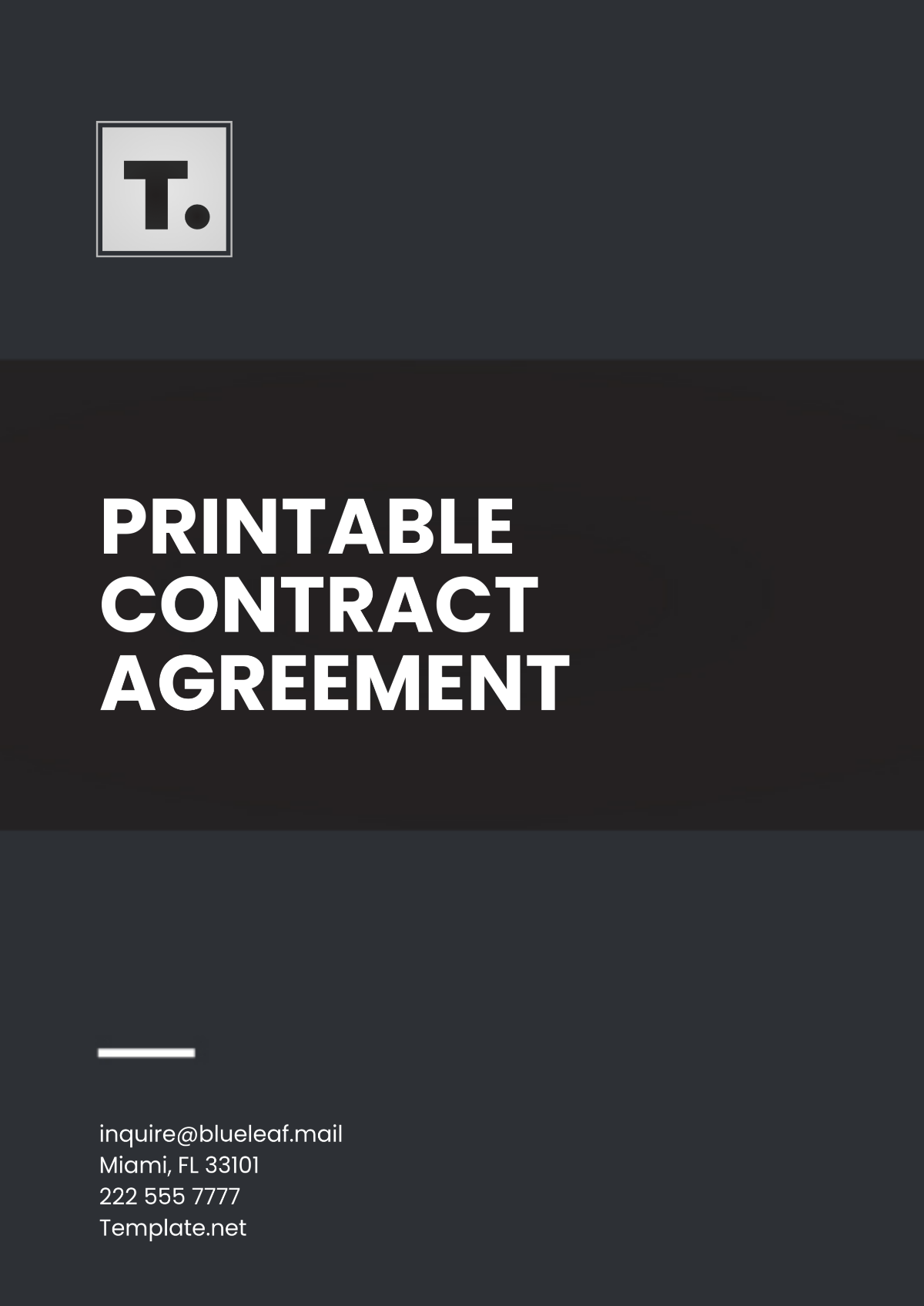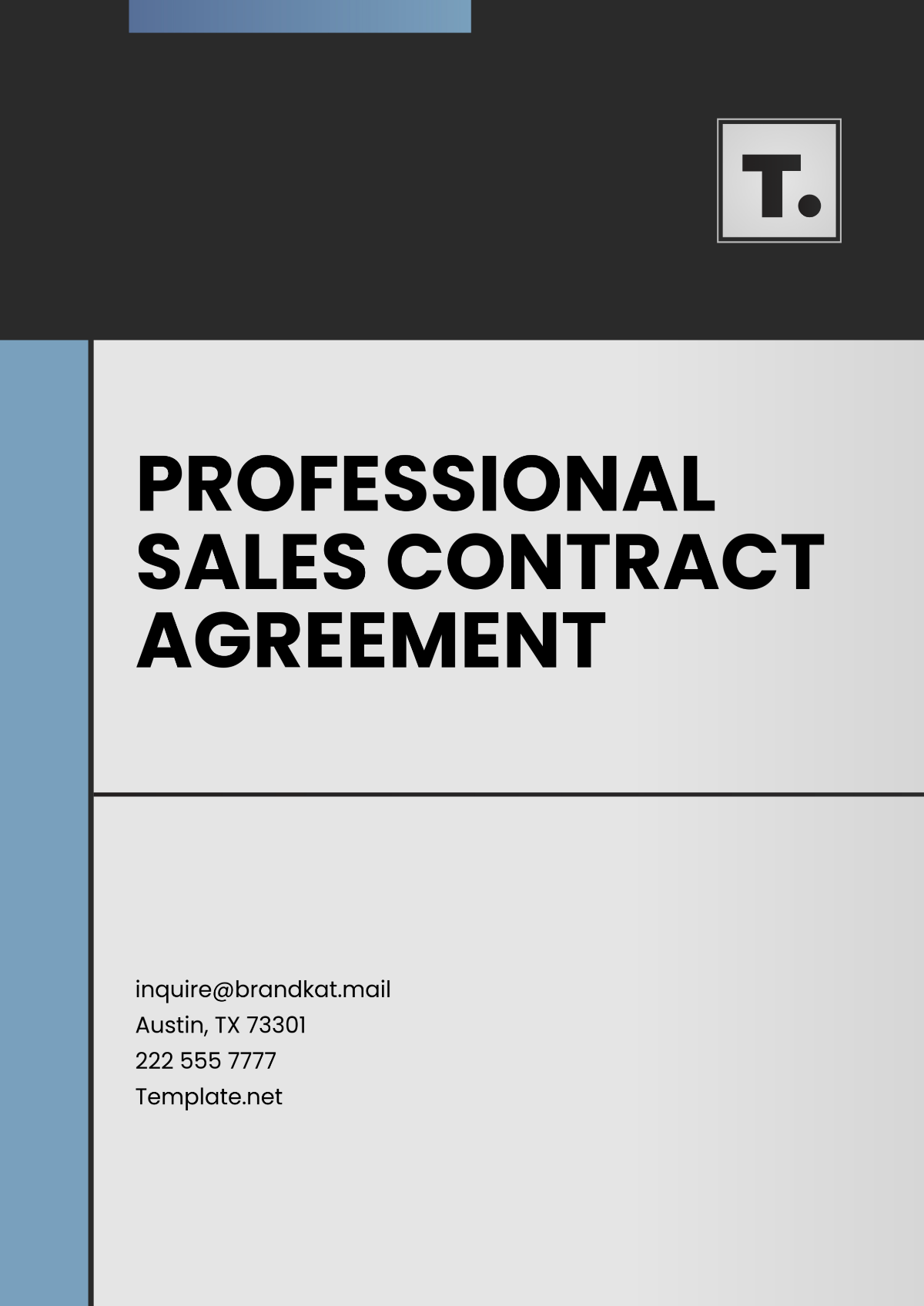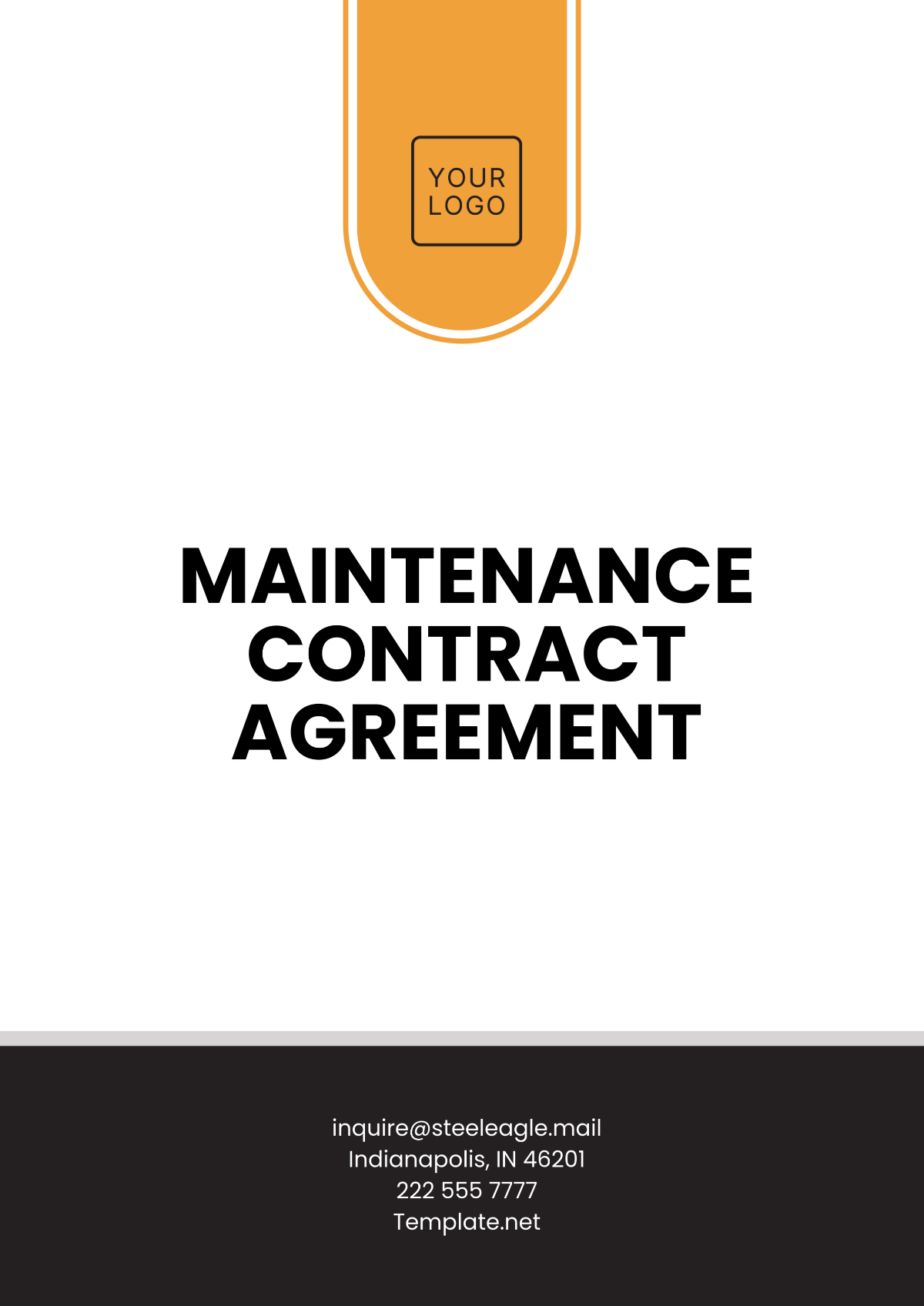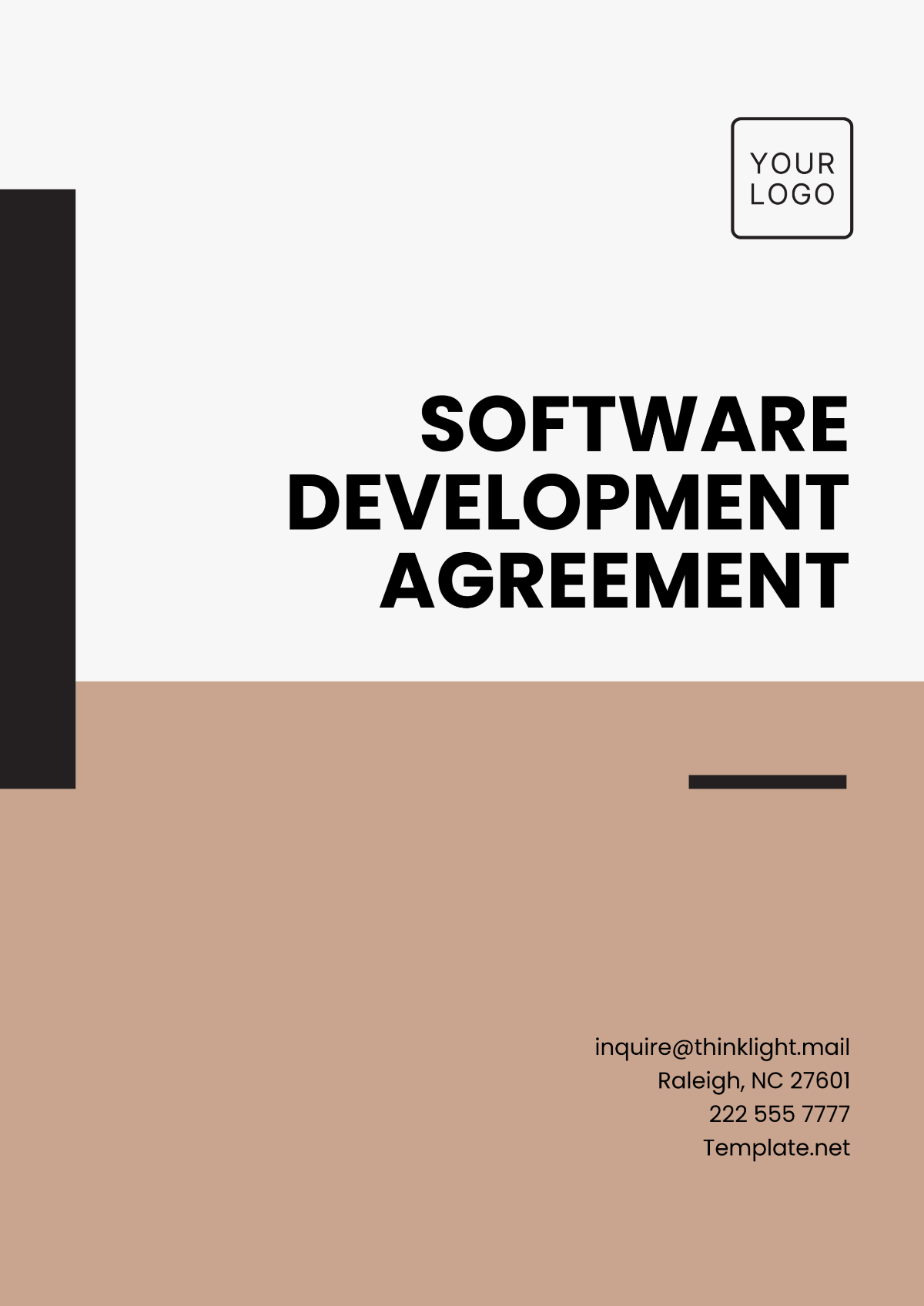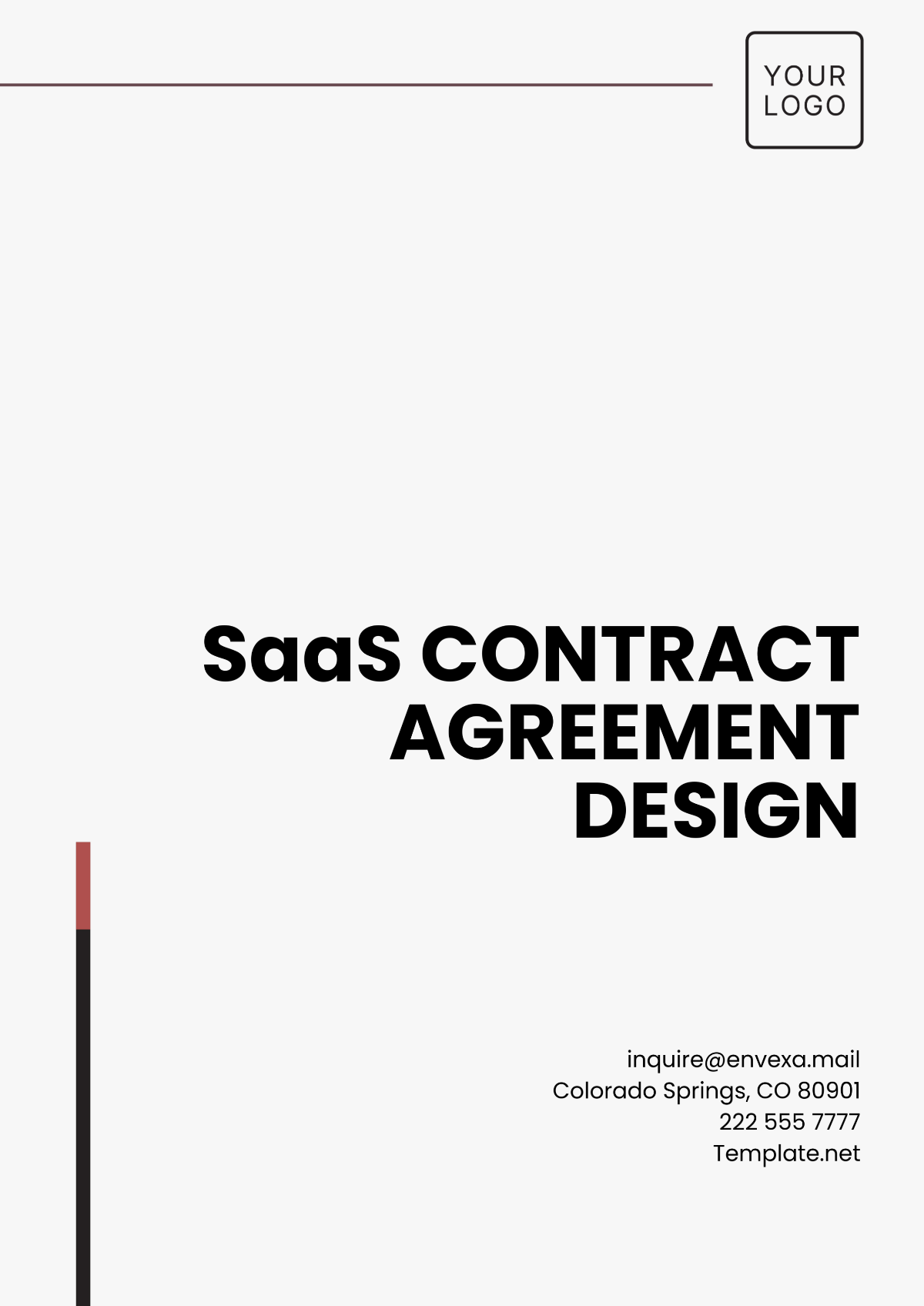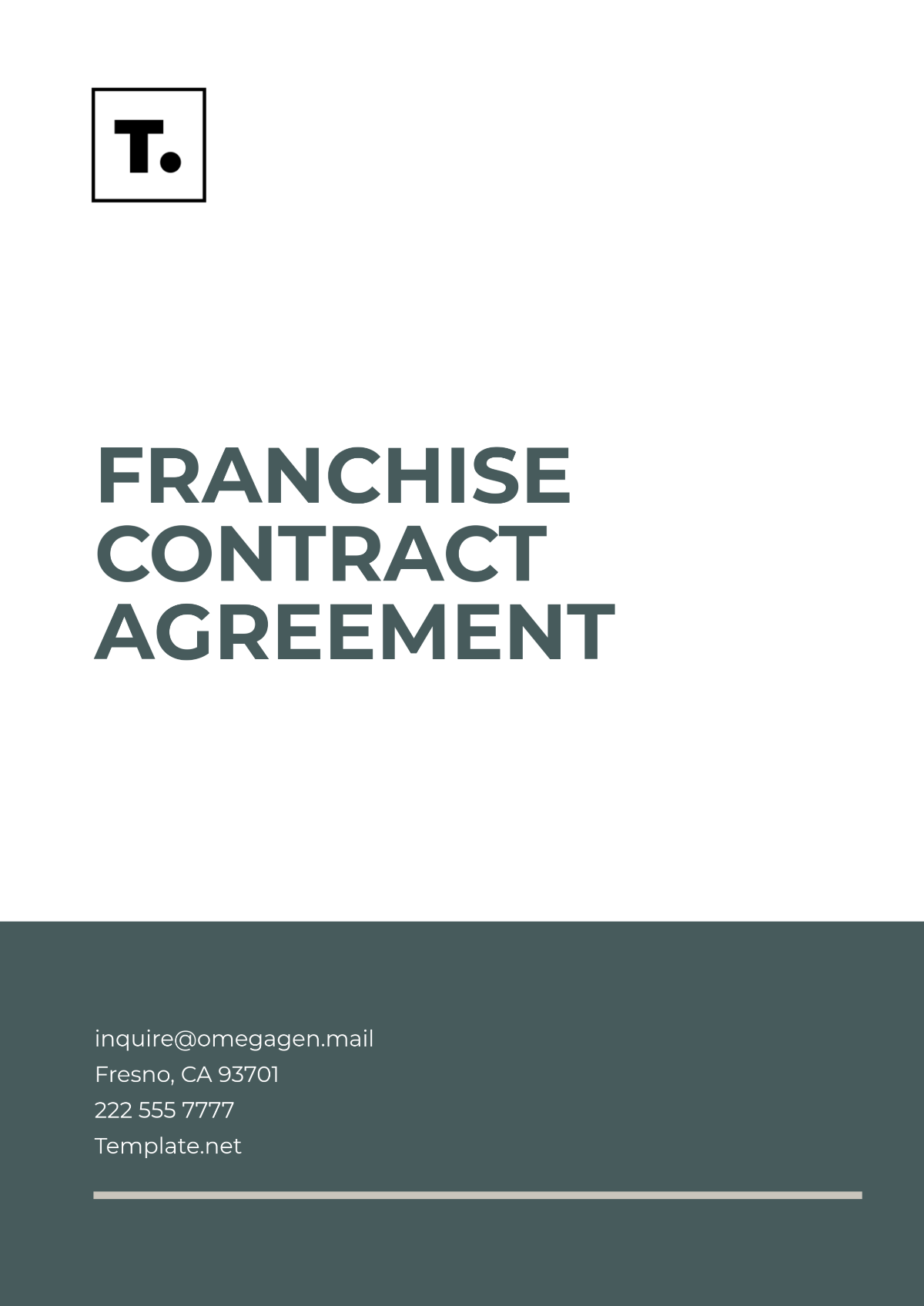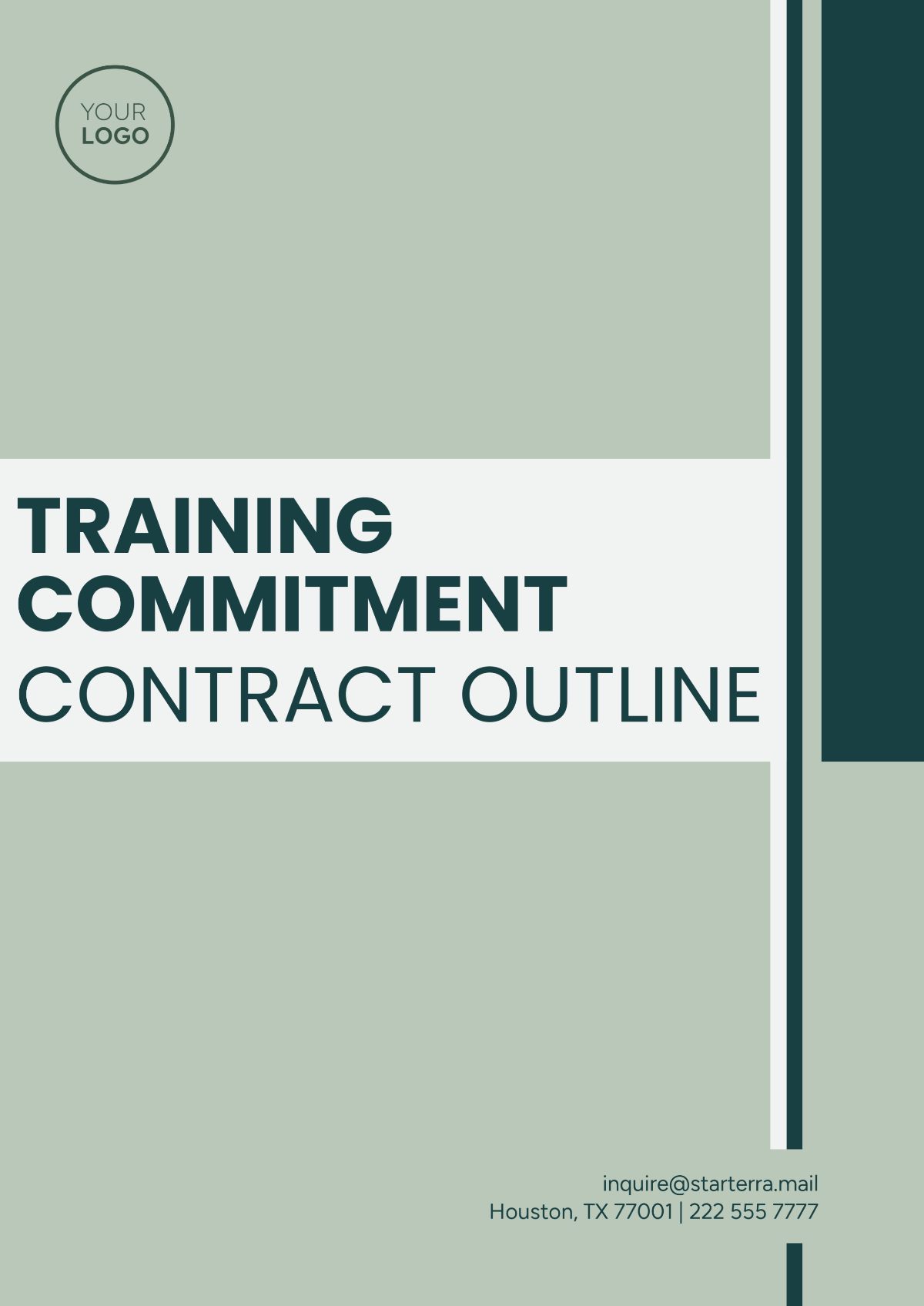Sales Research on Competitive
Contractual Terms
Introduction
Purpose of the Research
The primary purpose of this research is to gain a deeper understanding of the competitive landscape in our industry, specifically focusing on the contractual terms offered by key competitors. By examining the contractual aspects of our industry, we aim to identify opportunities to enhance our own contracts, improving our competitiveness and customer value.
Scope of the Research
This research encompasses a comprehensive review of contractual terms, encompassing pricing, service-level agreements (SLAs), terms and conditions, warranties, and support, as well as strategies employed in contract negotiations. Additionally, it explores best practices and recommendations for adjustments.
Methodology
Our methodology involves a two-fold approach. Firstly, we conducted in-depth secondary research utilizing publicly available data, competitor contracts, and industry reports. Secondly, we engaged in primary research through surveys, interviews, and case studies with key industry experts, allowing us to gather valuable insights and perspectives.
Competitive Analysis
Key Competitors
Our competitive analysis identified three key industry players: [Company 1], [Company 2], and [Company 3]. These organizations have a substantial market presence and have set industry benchmarks in contractual terms.
Overview of Their Contractual Terms
Key contractual terms, including pricing, SLAs, terms, and conditions, were examined and benchmarked against our existing contracts to identify areas of potential improvement and differentiation.
Areas of Focus
The research spotlighted the following aspects. For confidentiality and presentation sake, we will name our sample companies as [Company 1], [Company 2], and [Company 3].
[Company 1] excels in SLA metrics.
[Company 2]'s pricing models are highly competitive.
[Company 3] has robust data privacy provisions.
Pricing and Payment Terms
Pricing Models
Our analysis revealed varying pricing models. [Company 1] adopts a tiered pricing model, while [Company 2] relies on usage-based pricing, and [Company 3] offers a subscription-based approach.
Discounts and Promotions
[Company 2] offers discounts for long-term contracts, while [Company 1] focuses on volume-based discounts. [Company 3] concentrates on promotional bundles.
Payment Schedules
All three key competitors offer flexible payment schedules, including monthly, quarterly, and annual options.
Service-Level Agreements (SLAs)
SLA Metrics
Our research on SLAs uncovered key performance metrics utilized by competitors. [Company 1] focuses on uptime percentage, [Company 2] emphasizes response times, and [Company 3] prioritizes resolution times.
Service Availability
Competitors maintain high service availability standards.
Company Name | Service Quality Rate |
[Company 1] | 99.9% |
[Company 2] | 99.5% |
[Company 3] | 99.8% |
Response and Resolution Times
[Company 2] shines in response times with an average of 2 hours, while [Company 1] and [Company 3] maintain response times of 3 and 4 hours, respectively. In terms of resolution times, [Company 3] demonstrates exceptional efficiency with an average of 6 hours, followed by [Company 2] at 8 hours and [Company 1] at 10 hours.
Terms and Conditions
Contract Duration
[Company 1] recognizes this by offering clients a wide range of contract options, from as short as one month to as long as five years. The idea is to cater to clients with varying needs, allowing them to choose a duration that best aligns with their business plans.
[Company 2], on the other hand, focuses on more medium-term engagements, offering contracts that typically span one to three years. In contrast, [Company 3] prefers two-year contracts, providing clients with a balanced commitment period.
For instance, in recent engagements:
[Company 1]: Successfully secured a large-scale client by offering a two-year contract with a 10% discount for the first year. This flexibility allowed the client to align their spending with their annual budgets.
[Company 2]: Outperformed competitors in a niche market by specializing in one-year contracts, appealing to startups and rapidly scaling businesses looking for shorter commitments.
[Company 3]: Excelled in industries with high compliance requirements, positioning themselves as the go-to option due to their reputation for reliability over two-year contract terms.
Renewal and Termination Clauses
All competitors maintain transparent and client-centric renewal and termination clauses. With [x] days' notice required for contract termination, it offers clients an opportunity to adjust their commitments as needed.
[Company 1] stands out by incorporating an early termination penalty, which encourages clients to fulfill their contract terms. On the other hand, both [Company 2] and [Company 3] provide a grace period for contract termination, enabling clients to make changes without incurring penalties during a specified window.
As part of our competitive analysis, we observed that:
[Company 1]: Reduced early terminations by [x]% after implementing the early termination penalty. This change also led to increased contract fulfillment and improved revenue retention.
[Company 2]: Excelled in retaining clients by offering a termination grace period, enhancing their reputation for client-focused services.
[Company 3]: Gained trust and credibility among clients in industries with unpredictable requirements, such as construction and project-based businesses.
Data and Privacy Provisions
These provisions are fully compliant with the latest data protection regulations, emphasizing the utmost security of client data. [Company 1] and [Company 2] uphold strong data privacy standards, providing clients with a sense of security regarding their sensitive information. Here's an example of how strong data and privacy provisions have impacted these competitors:
[Company 1]: Increased their market share in the small to medium-sized business sector by emphasizing their commitment to data protection.
[Company 2]: Developed a reputation for transparent data handling, a crucial selling point in industries where data privacy is a paramount concern, such as legal and accounting services.
[Company 3]: Attracted prominent clients from healthcare and finance sectors due to their robust data security measures. Successfully navigated high-stakes compliance audits with ease.
Warranty and Support
Product/Service Warranties
Competing in the warranty arena, [Company 1] offers a 12-month warranty for its products, demonstrating their confidence in product quality. [Company 2] and [Company 3], however, provide more extensive 24-month warranties, which serve as an assurance of the durability and reliability of their offerings.
Customer Support and Maintenance
All three companies understand the value of comprehensive customer support. The provision of 24/7 customer support services ensures that clients receive assistance whenever they require it.
A notable distinction arises in terms of maintenance. [Company 1] and [Company 3] offer free remote maintenance, providing efficient troubleshooting and issue resolution from afar. In contrast, [Company 2] charges additional fees for on-site maintenance, making it an optimal choice for clients with a more budget-focused approach.
Here's how these warranty and support features impact each company:
[Company 1]: Positioned as an ideal choice for tech-savvy businesses looking for immediate remote support. Their 12-month warranty reassures clients while maintaining budget-friendliness.
[Company 2]: Has carved a niche in the market by providing cost-effective solutions with the option of on-site maintenance for those willing to invest in additional support.
[Company 3]: Thrives in sectors with zero tolerance for service downtime, such as data centers and manufacturing, where their free remote maintenance complements a robust 24-month warranty.
Escalation Procedures
All three companies uphold similar escalation procedures. With dedicated support escalation teams in place, they address complex issues swiftly and efficiently. This structure ensures that clients receive prompt and effective resolution for critical problems, enhancing overall client satisfaction.
Contract Negotiation Strategies
Identifying Competitive Advantages
Our research suggests several potential competitive advantages:
Highlight unique product or service features to set your offering apart.
Leverage competitive pricing strategies to match or beat rivals.
Emphasize the company's strong track record and reputation.
Tailor solutions to address specific pain points or challenges faced by clients.
Tailoring Offers to Match or Outperform Competitors
Tailoring contract offers involves the following:
Carefully analyzing competitor terms to understand their strengths and weaknesses.
Aligning contract durations, pricing structures, and SLAs with or exceeding industry standards.
Demonstrating flexibility and a willingness to accommodate client needs when possible.
Best Practices and Lessons Learned
Case Studies: Successful Contract Negotiations
The analysis of successful contract negotiations provides valuable insights into the strategies that have been proven to work in real-world scenarios. [Company 4]'s achievement of a significant contract win can be attributed to its innovative pricing model. This model not only lowered costs for the client but also improved service levels. By offering a pricing structure that was tailored to the client's specific needs, [Company 4] showcased its commitment to delivering value. This strategic approach not only secured the contract but also laid the foundation for a long-term client relationship.
Likewise, [Company 5] serves as another exemplar of effective contract negotiation. This company improved client relationships by focusing on tailored Service-Level Agreements. By aligning SLAs with the client's specific needs and expectations, [Company 5] demonstrated its commitment to providing personalized services. This approach not only enhanced client satisfaction but also facilitated smoother contract negotiations.
These case studies underline the importance of flexibility and customization in contract negotiations. It's clear that catering to the unique needs and preferences of clients can be a game-changer when pursuing successful negotiations.
Avoiding Pitfalls and Common Mistakes
While striving for successful contract negotiations, it's equally vital to avoid common pitfalls and mistakes that can hinder the process. Here are some key recommendations to prevent these common errors:
Internal Alignment: Ensure alignment between your sales, legal, and operational teams. Effective communication and collaboration between these departments are critical to presenting a unified front during negotiations. By fostering alignment, you can avoid misunderstandings, conflicts, and setbacks that may arise from internal dissonance.
Contractual Terms and Capabilities: Double-check that the contractual terms you commit to are fully aligned with your company's capabilities. Making commitments that your organization cannot fulfill can lead to strained client relationships, loss of credibility, and potential legal issues. Accurate representation of your capabilities is essential for establishing trust and delivering on promises.
Concessions and Profitability: During negotiations, it's crucial to strike a balance between meeting client demands and ensuring your own profitability. Overcommitting or making excessive concessions can negatively impact your bottom line. Analyze the potential long-term profitability of a contract and avoid concessions that might jeopardize your financial health.
Recommendations and Action Plans
Pricing and Contractual Adjustments
Drawing from our research, we recommend considering the implementation of a tiered pricing strategy. This approach provides flexibility to clients, allowing them to choose pricing options that align with their specific requirements and budgets. By offering tiered pricing, you can cater to a broader client base, attracting both cost-conscious clients and those seeking premium services. Such flexibility not only demonstrates a client-centric approach but also ensures competitive pricing, a crucial factor in today's market.
Furthermore, we suggest revising the available contract duration options to align more closely with competitor offerings. Flexibility in contract duration is a key consideration for many clients. By providing a range of contract lengths, you can cater to clients with varying business objectives. Aligning your contract duration options with industry standards can make your offerings more attractive and easier for clients to evaluate.
Enhancing Customer Support and SLAs
Maintaining or gaining a competitive edge in today's market requires a focus on customer support and Service-Level Agreements. As part of our recommendations:
Evaluate Response and Resolution Times: Consider the possibility of further reducing response and resolution times. Speedy issue resolution is a critical component of client satisfaction. By offering faster response and resolution times, you can distinguish your [Company 1] as a reliable and responsive partner.
Explore 24/7 On-Site Maintenance: Investigate options for providing 24/7 on-site maintenance. Offering on-site support around the clock ensures that clients have access to assistance whenever they need it. This can be a strong selling point, particularly in industries where service downtime is costly and disruptive.
Incorporating these recommendations into your approach can enhance your competitive position and elevate the quality of service you provide to clients. By focusing on both pricing and support services, you can create a compelling value proposition that differentiates your company in the competitive landscape.
Data Privacy and Disclosure
Data Protection
We are committed to protecting the privacy of all data collected during the course of this research. All data collected and used in this research project will be handled in accordance with our organization's data protection and privacy policies. Your privacy is a top priority, and we adhere to the highest standards of data security and protection throughout the research process.
Confidentiality
We treat all information related to this research as confidential within our organization. This includes research findings, contractual terms, and any proprietary data. We understand the importance of safeguarding your competitive advantage and will ensure that your confidential information is handled with the utmost care and discretion.
As part of our commitment to data privacy, we have implemented strict protocols for data access and protection. Only authorized personnel will have access to research data, and stringent security measures are in place to prevent unauthorized disclosure.
By adhering to these data privacy and confidentiality principles, we demonstrate our dedication to ethical research practices and ensure that your sensitive information is safeguarded throughout the research project.
Conclusion
This research on competitive contractual terms has provided a valuable foundation for optimizing your approach to contract negotiations. The insights gained from this analysis can empower your organization to create more client-centric, competitive, and profitable contractual relationships.
By understanding the terms, pricing models, and strategies employed by key competitors, you are better equipped to tailor your own contracts and outperform industry standards. The recommendations and action plans offered aim to guide your journey towards more successful contract negotiations and, ultimately, stronger and more enduring client relationships.


